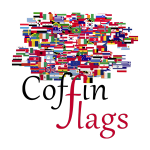Description
 Guam is an unincorporated and organised territory of the United States in Micronesia in the western Pacific Ocean. It is the westernmost point and territory of the United States, along with the Northern Mariana Islands. The capital city of Guam is Hagåtña and the most populous city is Dededo. The inhabitants of Guam are called Guamanians, and they are American citizens by birth. The indigenous Guamanians are the Chamorros, who are related to other Austronesian natives of Eastern Indonesia, the Philippines, and Taiwan. Guam has been a member of the Pacific Community since 1983. In 2016, 162,742 people resided in Guam. It has an area of 210 square miles (540 km2; 130,000 acres) and a population density of 775 per square mile (299/km2). In Oceania, it is the largest and southernmost of the Mariana Islands and the largest island in Micronesia. Among its municipalities, Mongmong-Toto-Maite has the highest population density at 3,691 per square mile (1,425/km2), whereas Inarajan and Umatac have the lowest density at 119 per square mile (46/km2). The highest point is Mount Lamlam at 1,332 feet (406 m) above sea level. Since the 1960s, the economy has been supported by two industries: tourism and the United States Armed Forces.
Guam is an unincorporated and organised territory of the United States in Micronesia in the western Pacific Ocean. It is the westernmost point and territory of the United States, along with the Northern Mariana Islands. The capital city of Guam is Hagåtña and the most populous city is Dededo. The inhabitants of Guam are called Guamanians, and they are American citizens by birth. The indigenous Guamanians are the Chamorros, who are related to other Austronesian natives of Eastern Indonesia, the Philippines, and Taiwan. Guam has been a member of the Pacific Community since 1983. In 2016, 162,742 people resided in Guam. It has an area of 210 square miles (540 km2; 130,000 acres) and a population density of 775 per square mile (299/km2). In Oceania, it is the largest and southernmost of the Mariana Islands and the largest island in Micronesia. Among its municipalities, Mongmong-Toto-Maite has the highest population density at 3,691 per square mile (1,425/km2), whereas Inarajan and Umatac have the lowest density at 119 per square mile (46/km2). The highest point is Mount Lamlam at 1,332 feet (406 m) above sea level. Since the 1960s, the economy has been supported by two industries: tourism and the United States Armed Forces.
The flag of the United States territory of Guam was adopted on February 9, 1948. The territorial flag is dark blue with a narrow red border on all sides (the border was a later addition). The narrow red border represents the blood that it ravaged in World War II and Spanish sovereignty. In the centre of the flag is the coat of arms; an almond-shaped emblem, which depicts a proa sailing in Agana Bay near Hagåtña, and GUAM coloured in red letters. The shape of the emblem recalls the slingshot stones used by the islanders’ ancestors. The landform at the back depicts the Punta Dos Amantes cliff on Guam. Charles Alan Pownall approved the flag’s shape in 1948. As a complement to the Guam flag design, and in response to Guam law providing for municipal flags, efforts were made to depict the culture of each Guam municipality on their own flag. These efforts to design 19 unique municipal flags were collaborated through the Mayors’ Council with the assistance of illustrative artist Gerard Aflague, a Guam-born native. These municipal flag designs reflect unique aspects of each of Guam’s municipal villages.








Reviews
There are no reviews yet.